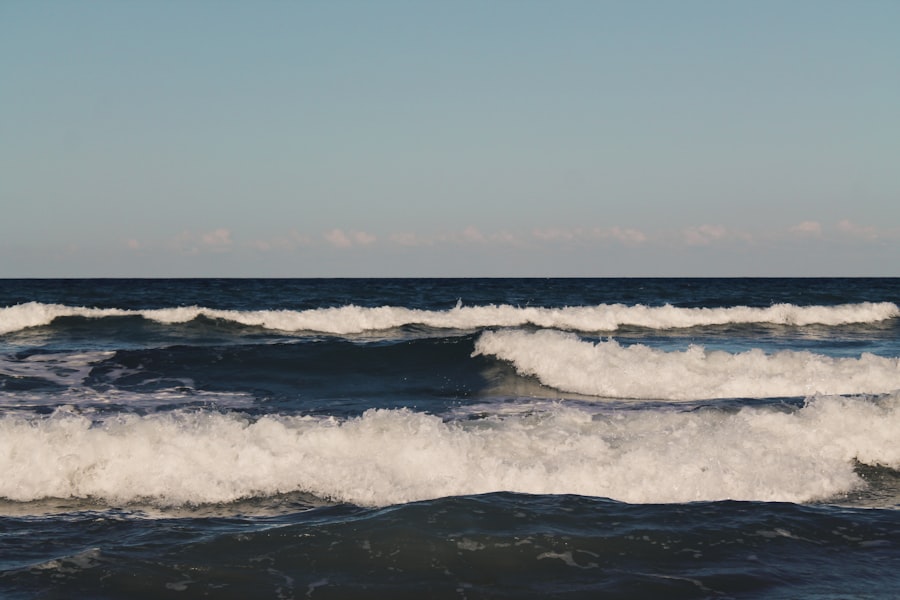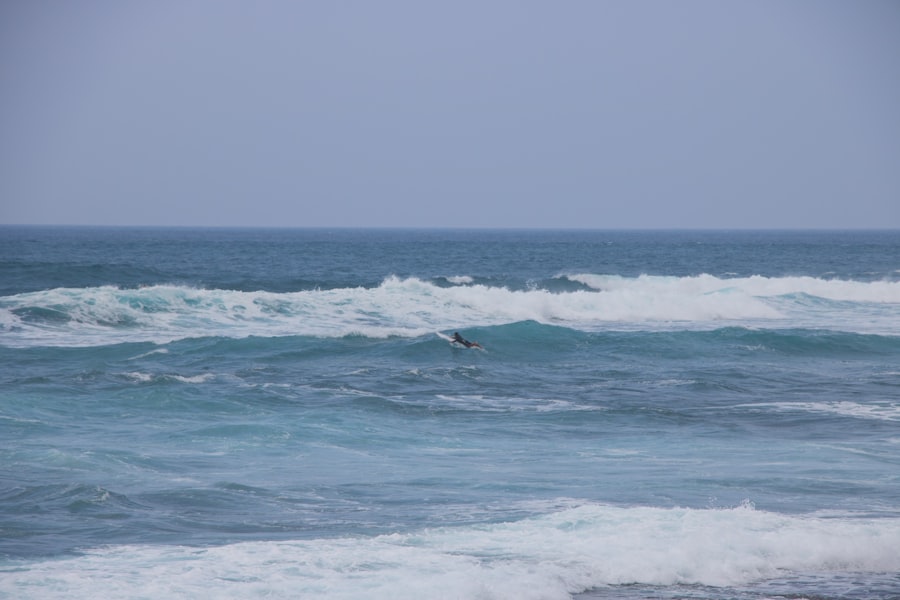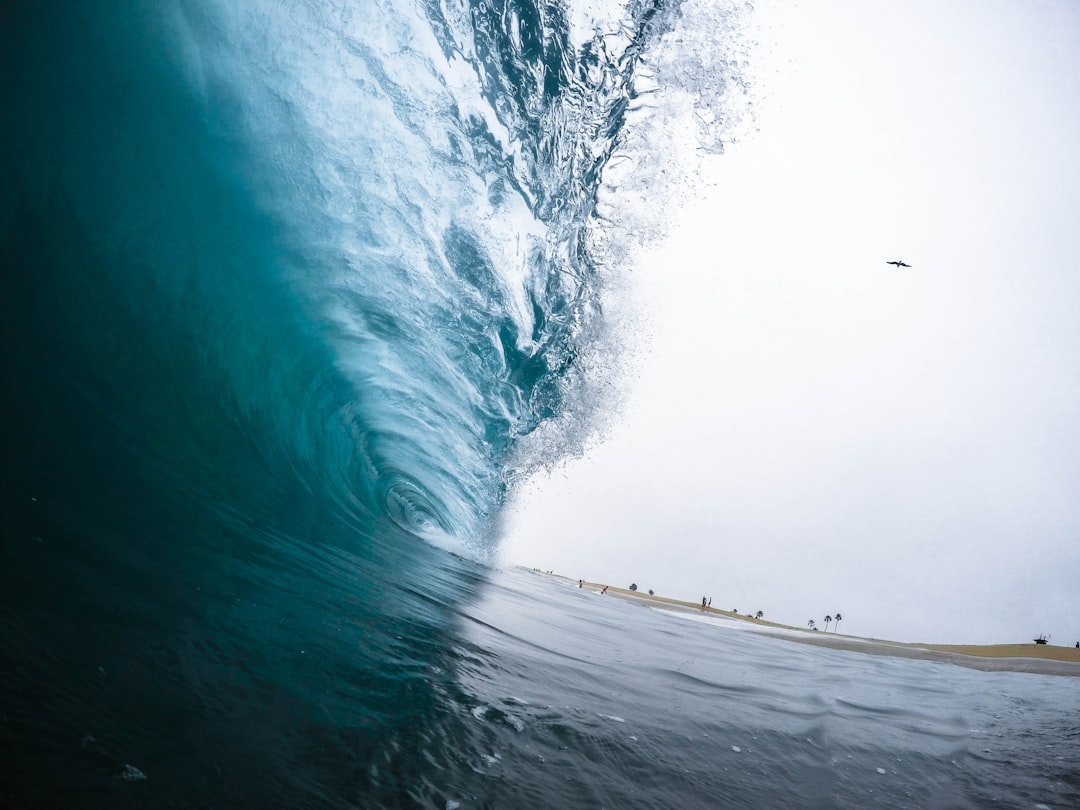The Drake Passage, a body of water located between the southern tip of South America and Antarctica, is renowned for its tumultuous seas and unpredictable weather patterns. This narrow stretch of ocean, measuring approximately 800 kilometers (500 miles) wide, serves as a critical maritime route for vessels traveling between the Atlantic and Pacific Oceans. Named after the English explorer Sir Francis Drake, who navigated these waters in the late 16th century, the passage has become infamous among sailors and researchers alike for its challenging conditions.
The confluence of the Atlantic and Pacific Oceans creates a unique environment where strong currents and fierce winds converge, resulting in some of the most formidable waves on the planet. Navigating the Drake Passage is not merely a test of seamanship; it is a complex interplay of natural forces that can significantly impact maritime operations. The passage is characterized by its high wave heights, which can reach staggering levels, making it a focal point for studies related to oceanography and navigation.
Understanding the dynamics of this region is essential for ensuring safe passage for vessels traversing these waters. As global shipping routes evolve and climate change continues to influence oceanic conditions, the importance of comprehending the intricacies of wave height in the Drake Passage cannot be overstated.
Key Takeaways
- Drake Passage is a treacherous stretch of water between South America’s Cape Horn and the South Shetland Islands of Antarctica.
- Understanding wave height is crucial for safe navigation in the high seas, as it directly impacts the stability and safety of ships.
- Factors such as wind speed, duration, and fetch contribute to the wave height in Drake Passage, making it one of the roughest seas in the world.
- Advanced technology like satellite altimetry and wave buoys are used to monitor and predict wave height in Drake Passage, aiding in navigation and safety.
- Historical data on wave height in Drake Passage helps in understanding trends and patterns, enabling better preparation for navigating the area.
Understanding Wave Height and its Importance for Navigating the High Seas
Wave height is a critical factor in maritime navigation, influencing everything from vessel stability to cargo safety. It is defined as the vertical distance between the crest of a wave and the trough that follows. In the context of the Drake Passage, wave height can vary dramatically due to a multitude of environmental factors, including wind speed, ocean currents, and atmospheric pressure systems.
For mariners, understanding wave height is essential for making informed decisions about route planning, vessel speed, and overall safety. High wave heights can pose significant risks to ships, particularly smaller vessels that may not be designed to withstand extreme conditions. The impact of waves on a ship’s hull can lead to structural damage, loss of cargo, or even capsizing in severe cases.
Therefore, accurate predictions of wave height are vital for ensuring that vessels can navigate safely through the Drake Passage. Mariners rely on various tools and technologies to assess wave conditions, allowing them to adjust their routes or take precautionary measures when necessary.
Factors Affecting Wave Height in Drake Passage

Several factors contribute to the wave height experienced in the Drake Passage, making it a unique maritime environment. One of the primary influences is wind speed and direction. The passage is notorious for its strong winds, which can reach speeds of over 60 knots during storms.
These winds generate waves that can quickly escalate in height and intensity, creating treacherous conditions for vessels. Additionally, the orientation of the wind relative to the current can amplify wave heights, leading to particularly dangerous situations. Another significant factor affecting wave height in the Drake Passage is ocean currents.
The Antarctic Circumpolar Current flows through this region, creating a powerful force that interacts with incoming swells from both the Atlantic and Pacific Oceans. This interaction can lead to steep waves that are difficult for ships to navigate. Furthermore, seasonal variations in weather patterns can also influence wave height; during certain times of the year, storms are more frequent and intense, resulting in higher average wave heights.
Technology for Monitoring Wave Height in Drake Passage
| Technology | Advantages | Disadvantages |
|---|---|---|
| Buoy Systems | Accurate wave height measurements | Expensive to deploy and maintain |
| Radar Sensors | Real-time data collection | May be affected by weather conditions |
| Satellite Altimetry | Wide coverage area | Less accurate in extreme weather |
Advancements in technology have greatly enhanced the ability to monitor wave height in the Drake Passage. Satellite-based systems provide real-time data on ocean conditions, allowing mariners to access critical information about wave heights before embarking on their journeys. These satellites utilize radar altimetry to measure wave heights from space, offering a broad overview of conditions across vast areas of ocean.
In addition to satellite technology, buoys equipped with sensors are deployed throughout the Drake Passage to collect localized data on wave height and other oceanographic parameters. These buoys transmit information back to shore stations, where it can be analyzed and disseminated to vessels in transit. The combination of satellite data and buoy measurements provides a comprehensive understanding of wave conditions, enabling mariners to make informed decisions about their routes and safety measures.
Historical Data on Wave Height in Drake Passage
Historical data on wave height in the Drake Passage reveals patterns that are crucial for understanding current conditions and predicting future trends. Over the years, researchers have compiled extensive records detailing wave heights during various seasons and weather events. This data not only highlights the variability of wave conditions but also underscores the potential impact of climate change on ocean dynamics.
Analysis of historical wave height data indicates that extreme weather events have become more frequent in recent decades, leading to an increase in average wave heights in certain areas of the Drake Passage. This trend raises concerns for maritime safety as vessels may encounter conditions that exceed their design limits more often than in the past. By studying historical data, scientists can better understand how changing climate patterns may continue to influence wave behavior in this critical maritime region.
Implications of High Wave Height for Ships and Navigation

The implications of high wave heights for ships navigating the Drake Passage are profound and multifaceted. For one, increased wave heights can lead to heightened risks of accidents at sea. Ships may experience significant rolling and pitching motions that can compromise crew safety and cargo integrity.
In extreme cases, vessels may be forced to alter their course or seek shelter in safer waters until conditions improve. Moreover, high wave heights can also affect operational efficiency. Delays caused by adverse weather conditions can lead to increased fuel consumption and extended travel times, impacting shipping schedules and costs.
For commercial shipping companies, these factors can translate into substantial financial losses. As such, understanding and anticipating wave conditions is essential for effective route planning and risk management in this challenging maritime environment.
Strategies for Navigating High Wave Height in Drake Passage
Navigating high wave heights in the Drake Passage requires a combination of skillful seamanship and strategic planning. One effective strategy is to adjust vessel speed based on current wave conditions. Slowing down during periods of high waves can reduce stress on the ship’s hull and improve stability, allowing for safer passage through turbulent waters.
Additionally, experienced captains often choose to alter their course slightly to take waves at an angle rather than head-on, which can mitigate the impact of large swells. Another important strategy involves thorough pre-voyage planning that incorporates real-time weather forecasts and wave height predictions. By utilizing advanced meteorological tools and data from monitoring systems, mariners can make informed decisions about when to set sail or whether to delay departure until conditions improve.
This proactive approach not only enhances safety but also contributes to more efficient navigation through one of the world’s most challenging maritime routes.
Safety Measures for Ships in High Wave Height Situations
Safety measures are paramount when navigating high wave heights in the Drake Passage. One critical precaution is ensuring that all crew members are well-trained in emergency procedures specific to rough seas. This includes conducting regular drills on securing cargo, managing ballast systems, and responding to potential emergencies such as man overboard situations or equipment failures.
Additionally, vessels should be equipped with appropriate safety gear, including life rafts, personal flotation devices, and communication equipment capable of functioning under adverse conditions. Regular maintenance checks on all safety equipment are essential to ensure readiness when faced with high waves. Furthermore, establishing clear communication protocols among crew members can enhance situational awareness and facilitate quick responses during challenging circumstances.
Impact of Wave Height on Wildlife in Drake Passage
The impact of wave height extends beyond human activities; it also significantly affects marine wildlife inhabiting the waters of the Drake Passage. High waves can disrupt feeding patterns for various species, including seals and seabirds that rely on stable conditions for hunting and nesting. For instance, strong swells may make it difficult for these animals to access food sources or find suitable breeding grounds along coastal areas.
Moreover, extreme weather events associated with high wave heights can lead to habitat degradation for marine life. Increased sedimentation from turbulent waters can smother delicate ecosystems such as coral reefs or kelp forests, further threatening biodiversity in this ecologically rich region. Understanding these impacts is crucial for conservation efforts aimed at protecting both marine wildlife and their habitats within the Drake Passage.
Future Trends in Wave Height and Navigation in Drake Passage
As climate change continues to influence global weather patterns, future trends in wave height within the Drake Passage are likely to evolve significantly. Scientists predict that rising sea temperatures may lead to more intense storms and altered wind patterns, potentially resulting in increased average wave heights over time.
In response to these anticipated changes, maritime industries are likely to invest further in advanced technologies for monitoring ocean conditions and improving vessel design for enhanced stability in rough seas. Additionally, ongoing research into climate impacts on ocean dynamics will be essential for developing adaptive strategies that ensure safe navigation through this vital maritime corridor.
Navigating the High Seas in Drake Passage
Navigating the high seas of the Drake Passage presents both challenges and opportunities for mariners worldwide. With its notorious reputation for high wave heights and unpredictable weather patterns, this region demands respect and careful consideration from those who traverse its waters. Understanding the factors influencing wave height—along with advancements in monitoring technology—has become increasingly important for ensuring safe passage through this formidable stretch of ocean.
As climate change continues to reshape our planet’s oceans, it is imperative that maritime industries remain vigilant in adapting their practices to meet evolving challenges. By prioritizing safety measures, investing in technology, and fostering a deeper understanding of environmental impacts on navigation, mariners can continue to navigate the high seas of the Drake Passage with confidence and resilience. Ultimately, successful navigation through this iconic waterway will depend on a combination of skillful seamanship and a commitment to safeguarding both human lives and marine ecosystems alike.
Today, the Drake Passage is experiencing significant wave activity, with wave heights reaching impressive levels. For those interested in understanding more about the current conditions and the factors influencing these wave patterns, a related article provides in-depth insights and analysis. You can explore this topic further by visiting the article on
